
Be’er Sheva, the Biblical city of the Patriarchs is the largest city in southern Israel referred to as the “Capital of the Negev”.
Be’er Sheva is first mentioned in the Bible when the Patriarchs Abraham and Isaac, both dug wells and made treaties with Abimelech King of Gerar. First, it was Abraham’s pact with Abimelech (Genesis 21:22-34), and later his son Isaac who closed his own agreement with him to allow the latter’s servants to dig wells in the area (Genesis 26:23-33).
Be’er Sheva means “Well of Seven (sheep)” or “Well of the Oath”. Jacob with his family resided in the city as well.
The site is also mentioned in many other passages in the Bible: (Genesis 26:23–33), (Genesis 28:10–15 and 46:1–7), (Joshua 15:28 and 19:2), (I Samuel 8:2), (I Samuel 14:48 and 15:2–9), (I Kings 19:3), (Amos 5:5 and 8:14).
According to the Bible, Be’er Sheva was the southernmost territory settled by Israelites, hence the expression “from Dan to Be’er Sheva” to describe the kingdom.
Human settlements in the area date way back to the Copper Age. Former inhabitants lived in caves, crafting copper tools and raising cattle. Remains discovered at nearby Tel Sheva (recognized by UNESCO as a world heritage site), is a famous archaeological site east of modern-day Be’er Sheva. It reveals that the region has been inhabited since the 4th millennium BCE. The city has been destroyed and rebuilt many times over the centuries.
During the Roman era and later Byzantine period, the town served as a front-line defense against Nabatean attacks. The last inhabitants of Tel Sheva were the Byzantines, who abandoned the city during the Arab conquest of the Holy Land in 638 CE.
During the Ottoman period (1517 – 1917) and towards the end of the 19th century, the Ottomans built a police station in the location to keep the Bedouins in check. They built roads and a number of small buildings from local materials which are still standing today. A town plan was created by a Swiss and a German architect, which can still be seen today in the Old City.
During World War I, the Ottomans built a military railroad from the Hejaz to Be’er Sheva. The station that was inaugurated on October 30, 1915, is an active museum and restaurant today.
The train line was active until the British army conquered the region.
On October 31, 1917, following Col. Richard Meinertzhagen’s brilliant diversion plan, General Allenby’s troops breached the Turkish defense lines between Gaza and Be’er Sheva. The 4th Light Horse Brigade under Brigadier General William Grant, with only horses and bayonets, charged the Turkish trenches, overran them and captured the wells of Be’er Sheva in what is known as the “last successful cavalry charge in British military history.”
On the north side of the Old City, there is a British cemetery containing the graves of the Australian and British soldiers from WWI.
During the war of Independence of 1948, the Negev Brigade with the 89th Battalion of the 8th Brigade liberated the city from the Egyptians.
In memory of the soldiers who fought and liberated the city, a Monument to the Negev Brigade designed by Dani was erected on a hill overlooking the city from the east and recognized as a symbol of Be’er Sheva.
Lately, the city of Be’er Sheva is being transformed into an innovation center with modern cultural, scientific and environmental developments. These include urban design elements such as water fountains, bridges, playgrounds, parks and newly erected buildings at the Ben-Gurion University. Just north of Soroka Hospital, office towers and an Advanced Technologies Cyber Park with an adjacent train station serve crowds of young students and high Tec personnel.
By bus, taxi or guided tour.
 Gal Vihara Statues
Gal Vihara Statues  Fort William
Fort William  Vagator and Chapora
Vagator and Chapora  The Church of St. Petros and St. Tabitha,...
The Church of St. Petros and St. Tabitha,...  Chiang Mai Night Market, Thailand
Chiang Mai Night Market, Thailand  Taktshang Goemba
Taktshang Goemba  Galata Tower
Galata Tower  Holy Sepulcher Jerusalem
Holy Sepulcher Jerusalem  Western Wall Jerusalem
Western Wall Jerusalem  The Roman Byzantine Cardo Jerusalem
The Roman Byzantine Cardo Jerusalem
 The Wide Wall Jerusalem
The Wide Wall Jerusalem
 Church of St. John the Baptist, Ein Karem...
Church of St. John the Baptist, Ein Karem...  Church of the Visitation, Ein Karem, Jeru...
Church of the Visitation, Ein Karem, Jeru...  Yad Vashem, Jerusalem
Yad Vashem, Jerusalem  City of David, Jerusalem
City of David, Jerusalem  Western Wall Tunnel Tour Jerusalem
Western Wall Tunnel Tour Jerusalem 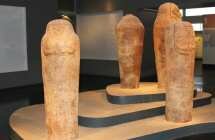 Israel Museum Jerusalem
Israel Museum Jerusalem  Church of St. Peter in Gallicanto, Jerusa...
Church of St. Peter in Gallicanto, Jerusa...  Masada, the Mountain Fortress
Masada, the Mountain Fortress  Caesarea
Caesarea  Bahai Gardens and German Colony
Bahai Gardens and German Colony  Kanna (Cana), the Holy Land
Kanna (Cana), the Holy Land  Mount Tabor (Tavor)
Mount Tabor (Tavor)  Mt. Beatitudes, The Holy Land
Mt. Beatitudes, The Holy Land  Tabgha, The Holy Land
Tabgha, The Holy Land  Primacy of Petros, Tabgha
Primacy of Petros, Tabgha  Capernaum, The Holy Land
Capernaum, The Holy Land  Yardenit, The Holy Land
Yardenit, The Holy Land  Tel Dan, The Holy Land
Tel Dan, The Holy Land  Caesarea Philippi, The Holy Land
Caesarea Philippi, The Holy Land  Mt. Bental, Golan Heights
Mt. Bental, Golan Heights  Golan Heights Winery
Golan Heights Winery  Mt. Beatitudes, The Holy Land
Mt. Beatitudes, The Holy Land  Yaffo (Jaffa), The Holy Land
Yaffo (Jaffa), The Holy Land  Old Train Station, Yaffo – Tel-Aviv
Old Train Station, Yaffo – Tel-Aviv  Tel Aviv, Israel
Tel Aviv, Israel  Sarona, Tel Aviv
Sarona, Tel Aviv  Sde Boker, The Holy Land
Sde Boker, The Holy Land  Avdat (Ovdat), The Holy Land
Avdat (Ovdat), The Holy Land  Makhtesh Ramon, The Holy Land
Makhtesh Ramon, The Holy Land
 The Kingdom of Jerusalem, The Holy Land
The Kingdom of Jerusalem, The Holy Land  Belmont (Tzuba), The Kingdom of Jerusalem
Belmont (Tzuba), The Kingdom of Jerusalem  Castellum Belveern (Castel), Kingdom of J...
Castellum Belveern (Castel), Kingdom of J... 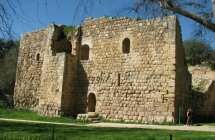 Aqua Bella, The Kingdom of Jerusalem
Aqua Bella, The Kingdom of Jerusalem 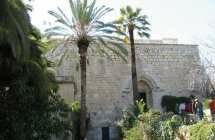 Emmaus, The Kingdom of Jerusalem
Emmaus, The Kingdom of Jerusalem 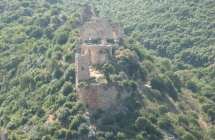 Montfort, The Kingdom of Jerusalem
Montfort, The Kingdom of Jerusalem  Judyn, The Kingdom of Jerusalem
Judyn, The Kingdom of Jerusalem 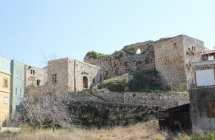 Chateau de Roi, The Kingdom of Jerusalem
Chateau de Roi, The Kingdom of Jerusalem 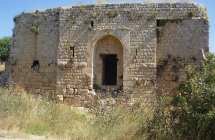 Châteauneuf, The Kingdom of Jerusalem
Châteauneuf, The Kingdom of Jerusalem  Judyn, The Kingdom of Jerusalem
Judyn, The Kingdom of Jerusalem  The Saraya House, Tel Aviv – Yaffo
The Saraya House, Tel Aviv – Yaffo  The Zodiac alleys, Tel Aviv – Yaffo
The Zodiac alleys, Tel Aviv – Yaffo  Yaffo Hill, Tel Aviv – Yaffo
Yaffo Hill, Tel Aviv – Yaffo  Yaffo Lighthouse, Tel Aviv – Yaffo
Yaffo Lighthouse, Tel Aviv – Yaffo  Yaffo Museum, Tel Aviv – Yaffo
Yaffo Museum, Tel Aviv – Yaffo  The Greek Orthodox Monastery, Tel Aviv Ya...
The Greek Orthodox Monastery, Tel Aviv Ya...  The Church of St. Petros and St. Tabitha,...
The Church of St. Petros and St. Tabitha,...  St. Peter’s Church, Tel Aviv Yaffo
St. Peter’s Church, Tel Aviv Yaffo  Immanuel Church, Tel Aviv – Yaffo
Immanuel Church, Tel Aviv – Yaffo  St. Nicholas Armenian Monastery, Tel Aviv...
St. Nicholas Armenian Monastery, Tel Aviv...  Al-Bahr Mosque, Tel Aviv – Yaffo
Al-Bahr Mosque, Tel Aviv – Yaffo  Mahmoudiya Mosque, Tel Aviv – Yaffo
Mahmoudiya Mosque, Tel Aviv – Yaffo  The Flea Market, Tel Aviv – Yaffo
The Flea Market, Tel Aviv – Yaffo 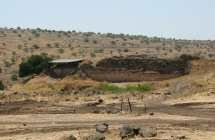 Chastellet, The Kingdom of Jerusalem
Chastellet, The Kingdom of Jerusalem 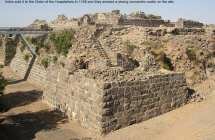 Belvoir, The Kingdom of Jerusalem
Belvoir, The Kingdom of Jerusalem  Beit She’an (Scythopolis), Kingdom of J...
Beit She’an (Scythopolis), Kingdom of J... 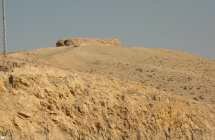 Castellum Rouge, The Kingdom of Jerusalem
Castellum Rouge, The Kingdom of Jerusalem  Hội An
Hội An  Ha Long Bay
Ha Long Bay  Ancient Acropolis in Bergama
Ancient Acropolis in Bergama  Lakshadweep – India’s tiniest...
Lakshadweep – India’s tiniest...  Kodaikanal – The Princess of Hill S...
Kodaikanal – The Princess of Hill S...  Gal Vihara Statues
Gal Vihara Statues  Punakha Dzong
Punakha Dzong 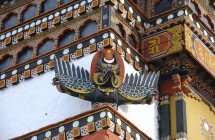 Trashichho Dzong
Trashichho Dzong  Taktshang Goemba
Taktshang Goemba  National Memorial Chorten
National Memorial Chorten  Coorg – Scotland Of India
Coorg – Scotland Of India  Samadhi Statue
Samadhi Statue  Ruwanwelisaya Stupa
Ruwanwelisaya Stupa  Mount Kinabalu
Mount Kinabalu  Sepilok Orangutan
Sepilok Orangutan  Victoria Memorial
Victoria Memorial  Ladakh – India’s Little Tibet
Ladakh – India’s Little Tibet  Bhangarh Fort
Bhangarh Fort  Tokyo Midtown
Tokyo Midtown  Asakusa and Sensoji Temple
Asakusa and Sensoji Temple  Tokyo Sky Tree
Tokyo Sky Tree  Tokyo Dome City
Tokyo Dome City  Sunshine City Aquarium
Sunshine City Aquarium  Dambulla Cave Temples
Dambulla Cave Temples  Polonnaruwa
Polonnaruwa  Palolem and Patnem
Palolem and Patnem  Agonda
Agonda  Udaipur
Udaipur  Hittite Sun Disc in Ankara
Hittite Sun Disc in Ankara  Anjuna
Anjuna  Vagator and Chapora
Vagator and Chapora  Dumas Beach, Gujarat
Dumas Beach, Gujarat  Dow Hill
Dow Hill  National Library
National Library  Grand Paradi Towers
Grand Paradi Towers  Delhi Cantonment
Delhi Cantonment  Savoy Hotel
Savoy Hotel 